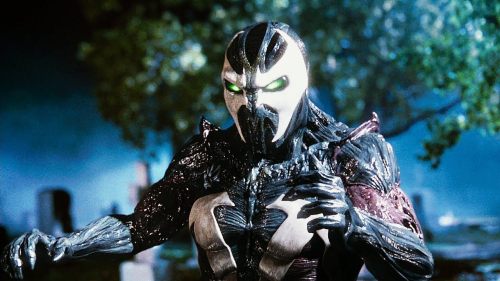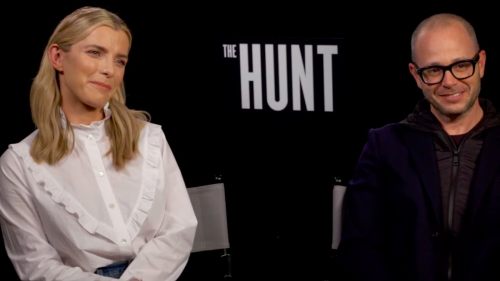Jason Blum Talks The New INSIDIOUS, The Next PURGE And GET OUT’s Awards Attention
Last weekend, Insidious: The Last Key took in nearly $30 million to put yet another notch in the win column for Jason Blum and his Blumhouse Productions. The producer, who entered the fright scene in a big way when he shepherded the microbudget Paranormal Activity to over $100 million in box-office grosses, has become synonymous with low-cost, high-yield horror movies, including the hugely profitable franchises spawned from Paranormal and Insidious.
With The Last Key, Blumhouse faced the challenge of continuing the Insidious franchise without either James Wan (who directed the first two) or Leigh Whannell (who helmed the third and scripted all four) steering the ship. “The hardest thing on this movie was definitely finding a new director,” he says, “because we had to choose someone from outside the Insidious family. We talked to a lot of people, and we were trying to find someone who would listen to us—but not listen too much.”
The ultimate choice was Adam Robitel, whose 2014 possession flick The Taking of Deborah Logan had become a viral hit via Netflix viewings (as Robitel recalls here). “We all loved Adam’s movie,” Blum recalls, “so we met him and really liked the way he talked about the movie, and the fact that he was willing to listen to us, but also had new ideas he wanted to bring. I’m thrilled that we chose him, and I’d love to work with him again.”
Also key to the new Insidious is the central presence of Lin Shaye, whose demon-hunting medium Elise Rainier began as a subsidiary part of the original film and here takes center stage in what Blum describes as “an origin story. I was psyched to be able to make a movie that no longer had her as a supporting character, but had her as the lead. Lin can do exposition as well as anyone I’ve ever seen. She has a very tough job in the Insidious movies: to explain what’s going on, and describe things that on paper make no sense. “There’s this place called the Further, you can’t get there, there are ghosts, I can talk to them…” If you read the lines she has in the scripts, it’s hard to say them and take them seriously. Lin has a unique ability to deliver that kind of information in a way that’s believable, and that’s why she’s such an important part of the franchise.”
Insidious helped spearhead a new wave of subtler, more classical scarefests that supplanted the hard-gore likes of the Saw and Hostel films on the horror scene in the 2010s. So many films have followed in its stylistic footsteps, one has to assume it has become more difficult to come up with new ways to scare audiences in the succeeding sequels. “It is hard,” Blum acknowledges. “Leigh always says, ‘Oh my God, how do we do this again?’ It’s always easier to frighten people in something new like Get Out or Happy Death Day, but when you’re using IP that isn’t as fresh, not just because of the other sequels but It and movies like that, it’s very difficult. It’s something we talk about all the time. I think we succeeded with The Last Key in making something that feels distinctive, but also relates to the prior three movies. We have different kinds of situations and demons; my favorite is the one who has keys for fingernails. He’s a very haunting fellow.”
While The Last Key has so far followed in its predecessors’ big-grossing footsteps, no announcement has been made yet about continuing the series. “I would not be very anxious to do another Insidious unless Leigh wanted to write it,” Blum notes, “but as long as he agrees to do it, I would be interested in doing a fifth one if the new one is successful enough.” Should that happen, “I might like to see Specs and Tucker,” Elise’s assistants played by Whannell and Angus Sampson. “There are a lot of possibilities. Maybe get [original stars] Patrick [Wilson] and Rose [Byrne] back? There are many different ways we could go.”
One Blumhouse film series that has been following a very specific thematic path is the one begun by 2013’s The Purge, with its scenario of all crime being legal for one night developing in acutely political directions in subsequent films. “The Purge has morphed into a franchise about class, a franchise about race, and in the next one, we really push the envelope with that thematically. The current political situation has sadly made this ground very fertile. As I’ve said before, I would have much preferred for Hillary Clinton to be President and our movies to do less well, but we are where we are.”
Pointedly set for release on July 4 of this year, the latest installment is currently titled The Purge: The Island, after its setting of Staten Island, though it was shot in upstate Buffalo, NY. “The state has a great rebate, but New York City is jam-packed with productions, so there’s not a lot of crew left there,” Blum explains. “The woman who runs physical production for us scouted a bunch of different places, and said we should give Buffalo a try.” In a similar situation to the new Insidious, Purge creator James DeMonaco stayed on to script but ceded the directorial reins to Gerard McMurray. “I was very moved by Gerard’s movie Burning Sands, about African-American fraternities. It was a terrific movie, and I called the producers and they gave him glowing reviews, and we hired him.”
Of course, Blumhouse saw enormous success last year mixing sociopolitical concerns with horror via Jordan Peele’s Get Out. It has received a bevy of awards nominations (Peele is in the running for both best director and best first-time director from the DGA), and is expected to continue when the Academy Award noms are announced on January 23. Blum, who’s been in the Oscar race before with Whiplash, admits he didn’t expect one of his genre productions to be so honored. “When we made Get Out, I foresaw a great, interesting, compelling movie about race, but there have been a lot of happy surprises along the way. The critical response I was happy about, the commercial response I was happy about, and now the attention we’ve been getting this season has been thrilling. We’ve been working hard to try to get it recognized, because it has two strikes against it as a genre movie. Hopefully the Academy will change their ways a little bit. I mean, it’s happened before with movies like The Silence of the Lambs, but it’s unusual.”
Also coming up from Blumhouse and distributor Universal are Jeff Wadlow’s Truth or Dare?, a teen-oriented chiller in the vein of Happy Death Day, and two much-anticipated bigger productions for the company: the new Halloween, reuniting Jamie Lee Curtis with The Shape (Nick Castle) under director David Gordon Green, and Glass, M. Night Shyamalan’s combo of his Unbreakable and Split universes. And speaking of shared worlds, the collapse of Universal’s Dark Universe megapicture plans after the box-office disappointment of The Mummy led many to speculate that the studio might hand over its classic creatures to Blumhouse, for showcasing in smaller pictures. Asked about the possibility, Blum says, “I haven’t heard that yet. I mean, I’ve read [the rumors], but I haven’t heard from the studio yet. But I’m looking forward to it,” he laughs, adding that he believes screen terror works best when done on a smaller scale. “I don’t think they were trying to make The Mummy as a true horror movie,” he notes, “but I think straight-up horror is better served by low budgets, for sure.”



